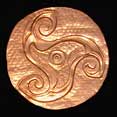|


text translation service for many worldwide languages
Today is
Thursday, February 23, 2023
The preoccupation of ancient peoples with the events occurring in the skies beyond their local horizons fall into three basic categories: events occuring during daylight hours, events occuring during the hours of darkness, and events occurring during the twilight hours after sunset and the first-light hours of dawn before sunrise.
Oral traditions of ancient peoples around the world suggest that the dawn and twilight periods of each day were regarded as somehow ‘sacred’ to many societies. Latitude defined the duration of these ‘sacred twilight’ periods each day, and the events on the horizon at these times were revered, and marked by them for observation. Later these observation points were the scenes of ritual re-enactments of past events in the sky, but more importantly were also the scenes of ‘simultaneous enactments’ of events in the ‘live sky’ as they happened, and as they intrepreted them.
These ‘markers’ have taken many forms. From simple prominent features on the local horizons to earthen mounds, single standing stones or menhirs, elaborate stone circles with complex geometrical groundplans, and the magnificent temples found all over the world whose orientations towards astronomical events on their local horizons mark them out as having been important observation points in ancient times.
Since the publication of Sir J. Norman Lockyer’s “Dawn of Astronomy” in 1894, and “Stonehenge and other British Stone Monuments Astronomically Considered” in
1906, his appendix entitled “Astronomical Hints for Archaeologists” has set many researchers off in directions their peers have often ridiculed. The study of what has become known as ‘Astro-Archaeology’, or ‘Archaeoastronomy’, has caused more controversy in academic circles than in most other areas of prehistorical study combined.
The roots of this study into the astronomical achivements of ancient peoples, and the history of its development, were first laid out in the book “A Little History of Astro-Archaeology; Stages in the transformation of a heresy”, written in 1977 by John Michell, one of the 20th. century’s foremost pioneers of the inter-disciplinary approach to understanding prehistory. Ridiculed by apologists for the standard paradigm of prehistory following his use of the “A” word in the title of his seminal works on megalithic science, “The View Over Atlantis”, Michell neverthless opened the floodgates of enquiry in the minds of many who had previously only questioned privately the inadequacies of consensus academic explanations for megalithic cultures, the remains of whose sophisticated science was evident in every corner of the globe.
Michell explained how this study originated with the great druid revivalist, the Rev. William Stukely in 1740:
“In ‘Stonehenge, a Temple Restored to the British Druids’ Stukely quoted Plutarch and other classical authorities on the ancient practice of orientating temples to face the rising sun on foundation day.” [1]
He showed how a contemporary of Stukeley, John Wood, whom he describes as “the mystical architect of Bath”, was renowned “for the scientific accuracy of his surveys” [2] and informs us that Wood, also writing in 1740, states in his “Description of Stanton Drew and Stonehenge” that:
“The seven hills of Bath were each dedicated to one of the heavenly bodies. In the centre was the temple of Apollo and the university of the Druids. There reigned King Bladud, tenth ruler of Britain after Brute, founder of the Druid order, necromancer, associate of Pythagoras, and the first to attempt flight with artificial wings. With the help of Athenian philosophers, imported by him to Britain, he created a vast model of the planetary system, still to be seen in the stone circles of Stanton Drew (Stonetown Druid) in Somerset. Nearby, at Harptree, was the Druid college of music; at Wookey Hole their oracular and initiation centre; Silbury was Aeropagus, hill of Mars, Stonehenge a temple to the moon”
[3]
Michell also points out that later writers supported the ideas of Wood that “the numbers and arrangements of the Stonehenge stones represented astronomical cycles” [4], and gave details from “Choir Gawr, the Grand Orrery of the Ancient Druids, called Stonehenge, Astronomically Explained, and proved to be a Temple for Observing the Motions of the Heavenly Bodies” published in 1770 by Dr John Smith.
Of course, it is well known now that the celtic druids merely inherited the remains of the megalithic science from the original inhabitants of thes islands, the mysterious Bronze Age peoples referred to as ‘the hyperboreans’, but as Michell points out with his references to the later work, “Druidical Temples of Wiltshire”, which was published in 1846 by the Rev. E. Duke, the idea of astro-archaeology was being actively, and scientifically, approached in an inter-disciplinary manner from the mid sixteenth century. He quotes from Duke:
“My hypothesis is as follows: that our ingenious ancestors portrayed on the Wiltshire Downs a Planetarium or stationary orrery located on a meridianal line, extending north and south, the length of sixteen miles.”
[5]
So the Rev. E. Duke explained this diagram showing (incorrectly as it happens) the relative topography of the Wiltshire temples. Despite his inaccuracies – and let us not forget he had no maps in his day – Duke was open-minded enough to assess the situation exactly as he saw it. So, as Michell is at pains to point out, it is in no way surprising that he goes on to state that:
“Astronomy, as a science, took an early precedence, and those, who at this day we account barbarians, possessed a knowledge, at which we ought worthily to wonder and admire.”
[6]
Michell firmly anchors the development of modern Astro-Archaeology though, with the researches of Sir J. Norman Lockyer, founder and for 50 years the editor of the magazine “Nature”. He pays much attention to the wanderings of Lockyer in Greece and Egypt, where in March 1890, he began to study the axis of Greek temples, starting with his curiosity over the difference in the orientations of the new and the old Parthenon. According to Michell:
“Having in mind the tradition that churches were orientated towards the point of sunrise on the feast day of their patron saint, he suspected that the same might be true of Greek and Egyptian temples.”
[7]
Explaining how Lockyer’s researches showed that Egyptian temples were orientated towards the rising and setting of various heavenly bodies at particular times of the year, he relates how Lockyer discovered that the temple of Amen-Ra at Karnak has a long axis directed towards the sunset at the midsummer solstice. It was here, for Michell, that Lockyer the scientist and astronomer first lifted the veil of secrecy surrounding the great achievements of our distant ancestors. In reference to the thoroughness of Lockyer’s studies, he relates the discoveries that:
“Other temples were aligned on certain stars, either those rising or setting near the North or South Pole during the night, which could therefore be used as ‘clock stars’ for telling the time, or those which rose ‘heliacally’ just before sunrise on feast days, giving warning of dawn and setting in motion the preliminary rituals. For example, seven temples were found pointing to Sirius, the star that appears on the horizon just before sunrise at the summer solstice, which coincides with the Nile flood and the Egyptian New Year.”
[8]
Michell tells that with the publication in 1894 of “Dawn of Astronomy” Lockyer faced violent opposition from the archaeological community of the day, who objected to his whole thesis and questioned the accuracy of his calculations. Relating how Lockyer returned to Egypt in 1893 to get the results of the astronomical observations that were made for him at many temples by Captain H.G. Lyons, who had been appointed by the Egyptian Public Works Ministry to assist him in the completion of the book, Michell also addresses the main objections to ancient astronomy that Lockyer faced, and which are regretably still dragged out today despite ample evidence to the contrary being available
in every bookshop, university and public library.
“To objections that with so many stars in the sky it was not surprising to find temples facing one or the other of them, Lockyer pointed out that he found only eight stars indicated by Egyptian temples and that these corresponded to the gods mentioned in the temple inscriptions. The Egyptians recognised a limited number of gods, but each one had many local synonyms. Hathor, according to Plutarch, is Isis, and at Denderah in the temple of Isis is the inscription ‘Isis shines into her temple on New Year’s Day, and she mingles her light with that of her father Ra on the horizon.’ Ra is the sun and Isis, otherwise Sothis, is the star Sirius. Lockyer calculated that Sirius rose in line with the extended axis of the temple of Isis in about 700 BC, agreeing with the archaeologists date for the founding of the temple, and that it rose at the same time as the sun, thus proving the inscription to be a true record of an astronomical event.”
[9]
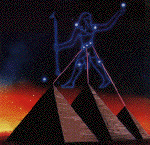
|
When Lockyer began his work he was unaware of the temple inscriptions which record the foundation ceremony of stretching a line from the
telluric centre in the sanctuary towards the heavenly body representing the tutelary deity on the horizon.
In several cases, particularly at Denderah and Edfu, Lockyer was able to identify the star in question and to establish the date of foundation when the star was in line with the temple’s axis.
|
The reception to Lockyer’s book “Dawn of Astronomy” was varied, and Michell uses Lockyer’s reaction to sum up the feelings of many who have since followed in Lockyer’s footsteps, pursued the study of Astro-Archaeology, and been similarly ridiculed or prudishly ignored:
“Objections were raised to several of Lockyer’s calculations and there was violent opposition from archaeologists to his whole thesis. Lockyer replied mildly that he wished every archaeologist would learn just a little astronomy.”
[10]
The archaeological community generally has for far too long been denigrating the work of astro-archaeologists, mainly because they understand little if any astronomy. In recent years they have similarly attacked those who promote the ‘paradigm shift’ presented by what as become known as ‘Coherent Catastrophism’. Yet it is only debate on these matters that the ‘Coherent Catastrophists’ has initiated; debate without which our understanding of the sophisticated cosmologies of ancient peoples, and the destructive celestial events that punctuated their peaceful existence, will not in any way progress.
The Morien Institute takes the simple view that, as with our planetary neighbours, impacts with our planet by comets, meterorite storms and asteroids throughout prehistory, which are now believed to have caused the sudden collapse of many late Bronze Age societies, and the fear of further civilisation-threatening impacts, provided sufficient motivation for ancient peoples to build various astronomical observatories for the prediction of future encounters with these celestial phenomena.
The remnants of these ancient observatories are evident on all continents, and are orientated towards specific areas of the sky where certain stars acted as ‘markers’ for the imminent appearance of meteor-stream ‘radiants’ above the local horizons. Many of these ‘local horizons’ were either artificially constructed from start, or else re-shaped from natural features to allow for greater accuracy of observation, and even whole mountain-sides appear to have been ‘landscaped’ so that minor ‘wobbles’ in the orbits of various celestial bodies could be determined by the astronomers of antiquity. By these methods it has been shown by Alexander Thom that they were able to accurately determine, for example, the 18.6-year cycle of the Lunar Nodes – something that would seriously test the skills of a modern surveyor.
With the progress made in recent years as astro-archaeologists compare notes with neo-catastrophists, ‘gradualist’ schools of thought in most of the historical sciences are having to incorporate the very real fact that many catastrophes have punctuated the history of life and civilisation on Earth. This continuing ‘paradigm shift’ is in the study of human civilisation from the perspective of a very dynamic recent (20,000 to 30,000 yrs) history of the solar system.
Peruvian Citadel is Site of Earliest Ancient Solar Observatory in the Americas
“Archeologists from Yale and the University of Leicester have identified an ancient solar observatory at Chankillo, Peru as the oldest in the Americas with alignments covering the entire solar year. Recorded accounts from the 16th century A.D. detail practices of state-regulated sun worship during Inca times, and related social and cosmological beliefs.
These speak of towers being used to mark the rising or setting position of the sun at certain times in the year, but no trace of the towers has ever been found. This paper reports the earliest structures that support those writings.
At Chankillo, not only were there towers marking the sun’s position throughout the year, but they remain in place, and the site was constructed much earlier – in approximately the 4th century B.C.”
Above is an extract from the Yale University Press Release dated March 2nd 2007. It refers to one of the most important and exciting astro-archaeological discoveries for many years. Below is an image showing the midsummer sunrise at Chankillo. Click on the image to go to the Yale Bulletin & Calendar page featuring this story.
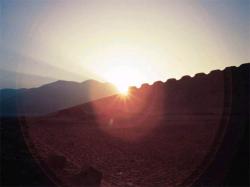
The rise of the sun between Tower 1 and Cerro Mucho Malo at the June solstice, 2003,
viewed from the western solar observatory. The sunrise position at the solstice
has shifted to the right approx. 0.3º since the year 300 BC.
The links below are just a varied sample of the websites of organisations
concerned with Astro-Archaeology, or Archaeoastronomy.
Clive Ruggles archaeoastronomy image archive
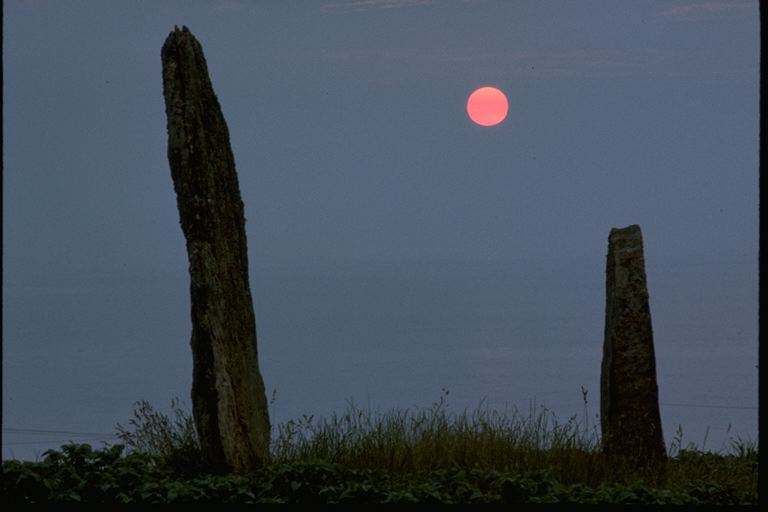
|
Clive Ruggles of Leicester University has compiled a unique collection of astro-archaeological images from many areas around the world. There are more than 1100 images listed in a geographical menu that has been selected for inclusion in the Discovery Channel School’s “Discover Magazine” as a valuable Internet resource. Click on the image to the left to enter the archive.
Those interested in Astro-Archaeology’ can now study this subject officially at Leicester University (UK). Clive Ruggles’ AR315 course has been one of the focal points for the study of this subject, and we highly recommend a visit to their website.
|
The reading list for the course is exceptionally good, and includes the compilation book “Astronomy Before the Telescope”, which is one of the best general works on the subject to date. The other essential book for the course, and for anyone wanting to get a better idea of the growing appreciation of the capablities of ancient peoples to accurately survey the relationship between the sites chosen for their monuments, the local horizons and the background of stars and other heavenly bodies that they observed, is “Stonehenge: A New Interpretation of Prehistoric Man and the Cosmos” by Prof. John North.
Centre for Archaeoastronomy
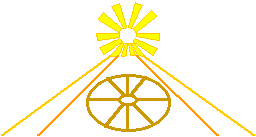
|
In their own words:
“The Center for Archaeoastronomy was founded in 1978 at the University of Maryland to advance research, education and public awareness of archaeoastronomy. The journal of the Center,
“Archaeoastronomy”, was started in 1977 and is the only publication devoted exclusively to world archaeoastronomy and ethnoastronomy.
The Center publishes its own journal with quarterly newsletter, plus specialized books. The Center is also the site of Lost Codex Books, a perpetual used book sale with titles relating to archaeology, astronomy, archaeoastronomy, etc.”
|
The Center’s quarterly newsletter
“Archaeoastronomy & Ethnoastronomy News”, comes free with subscriptions to the journal. As probably one of the most
useful resources on any website the Center has thoughtfully listed the total contents of every journal from Volume 1 issue 1 through to the latest edition.
In 1997, the Center helped found ISAAC, the International Society for Archaeoastronomy and Astronomy in Culture. A&E News added ISAAC news and business to its existing coverage and was circulated to ISAAC members, taking on an additional role as the Society’s newsletter. In 1998, the University of Texas Press took over publication of Archaeoastronomy.
Its new name was “Archaeoastronomy: The Journal of Astronomy in Culture”, and although it is no longer produced there are plans for an online version in the near future.
Cold weather and Megalithic Astronomy
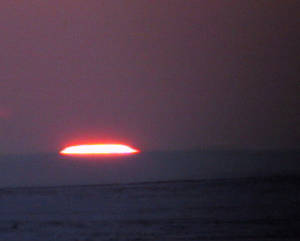
|
Did the weather have any influence on the skywatching of ancient peoples? Did normal, everyday, phenomena such as sunrises and sunsets look differently to peoples who lived in climates much warmer, or much colder, than we enjoy today?
This is a question that The Morien Institute has heard before, and there are a number of theories about the effects of ‘horizon observations’ – especially in cold air, where ice crystals affect refraction and therefore visual observation.
Wayne Davidson, of Resolute Bay, Nunavut, Canada, has done some really interesting research in this area, and his website shows evidence
of dedicated observations over a number of years. Please click on the image to the left to gain access to more of his data and some animations of sunsets at Stonehenge.
|
His observations of odd-shaped ‘rectangular sunsets’ have led to some interesting ideas:
“Weather wise, Stonehenge would have never been built today. Present day weather in the UK is far too cloudy to justify such a structure to be of any use. Stonehenge was amongst other things a mystical solar calendar for daily usage. Modern scientists suggest the idea that it was warmer during its construction, causing drier air, less clouds, this reasoning does not make sense given that modern day UK is cloudier and wetter most likely as a result of Global Warming. There is a better reason for the Sarsen superstructure, it was built during colder weather, in this case air certainly became clearer and much drier, this offered a great opportunity to study the sky”
Living in a cold climate in Resolute Bay, Canada, Wayne Davidson has compared conditions there with what he feels was the general climate in the islands of Prydein (Britain) at the time that some of the work was going on at Stonehenge. He has also studied some of his local Inuit structures with skywatching in mind, and has come to some interesting conclusions:
“The basic design of Stonehenge rocks have enormous similarity with what is called Inukshuk’s, they are Arctic marking stones made by the
people of the Canadian Arctic, Inuit.
Inukshuk’s were and are essential markers for letting a fellow hunter know about the location they are on, Inukshuk’s can also have a religious or spiritual meaning. Inukshuk’s are in general smaller than the Stonehenge bigger rocks, and can be very much like its Blue stones in certain instances in size and appearance.”
His website is well worth a visit, and should stimulate fellow skywatchers and astro-archaeologists to get their cameras out in cold, clear, weather. Having observed these ‘odd-shaped sunsets’ at a number of locations himself, he has made an Open Request for similar images taken anywhere else in the world to help with his study. Wayne is open to co-operation with others in this exciting research project, so if you have any images of odd-shaped solar or lunar horizon effects, please send them to him.
Once again, the true value of independent research has provided another new perspective on the pre-occupation that ancient peoples had with events in the ancient skies – skies that were likely much different to those we see today.
The Solmar Project
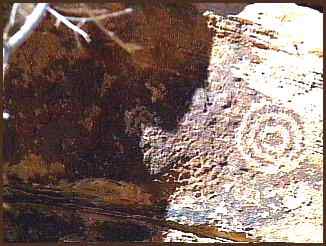
|
Every now and again we discover the existance of a project that simply stuns us in what it reveals about the extent and sophistication of the astronomical sciences in many ancient peoples. The SOLMAR PROJECT is one of those, and we could not improve on their own introduction:
“Many examples of sunlight interacting with petroglyphs in a distinctive way have been found. Often these interactions occur on astronomically significant days. The SOLMAR PROJECT is assembling a database of such observations. It is hoped that examining a large number of observations will give insights into the astronomical knowledge of ancient peoples and the implications of certain iconography”
Sadly this site no longer exists, but we have kept the original material from it online in the hope that someone else out there in the great wide world might be inspired enough by the contents to take up the banner and continue this interesting work – John Michael.
|
“Rock art appears on every continent except (as far as is known) Antarctica. While this database was established to examine solar markers in the Southwestern United States, we are also happy to accept entries from around the world. Astronomical alignments of prehistoric structures and earthworks are also of interest.”
In order to get a better understanding of the ways in which ancient peoples used light and shadow with complex astronomy you used to be able to add your own observations to the SOLMAR PROJECT database – but this no longer exists on the previous servers and we have been unable to find it as yet. The web editor of this site also included a graph of the sun’s declination near solstices, a calender of ‘events’ giving dates and exact times of solstices, equinoxes and the cross-quarter days, and a guide to calculating the sun’s ‘interaction possibilities’:
“Understanding the motion of the sun at the site you are studying is essential to recognizing interaction possibilities. In the northern hemisphere, the sun rises north of east in the summer and south of east in the winter, and the sun is higher in summer than in winter. The amount may be calculated from your latitude.”
There were also graphs for the sun’s daily motion at latitudes [30°], [35°], [40°] and [45°] making this one of the most useful sites for those interested in astro-archaeology generally or the SOLMAR PROJECT itself.
Native American Skywatching
A paper written by Steven Mizrach is devoted to the Lakota peoples ethnoastronomy, detailing their cosmology, and the names of the constellations giving their Lakota names and the animal and other figures that represented them in the Lakota peoples’ living tradition. It also provides interesting details about how the Sioux and other Native American peoples recorded the great Leonid Meteor storm of 1833.
Mizrach outlines the work of Sinte Gleiska University scholar Ronald Goodman, whose ten year study of the astronomical folklore of Lakota people was later published as “Lakota Star Knowledge: Studies in Lakota Stellar Theology”, of which Mizrach says:
“It discusses the spring constellations which the Lakota people observed while moving in a cyclical round from site to site in the Black Hills. The Black Hills were thought to be a terrestrial mirror of the cosmos, so the Lakota were simply “mirroring” the motions of the heavens. As the sun moved counterclockwise through the ecliptic, the Lakota were moving clockwise through the terrestrial analogues of their constellations.”
Mizrach lists a number of books, articles and papers about Native American Skywatching and Astronomy, some of which are listed below with links directly to them at Amazon:
“Lakota Star Knowledge: Studies in Lakota Stellar Theology”
“When Stars Came Down to Earth: the cosmology of the Skidi Pawnee Indians of North America”
“Sundance, The 50th Anniversary Crow Indian Sun Dance”
“Native American Astronomy”
“Earth and Sky: visions of the cosmos in Native American folklore”
“They Dance the Sky: Native American star myths”
“Echoes of the Ancient Skies: The Astronomy of Lost Civilizations”
“Living the Sky: the cosmos of the American Indian”
The are many others that The Morien Institute could recommend and we will list them below in due course.

Another interesting study about Native American Skywatching and the recording of observations is an essay by Von Del Chaimberlain of the Hansen Planetarium entitled “Reflections on Rock Art & Astronomy”, which is archived on the website of The Center for Archaeoastronomy.
It gives details about the Crab Nebula Supernova of AD 1054, which was visible for around 20 days, and was recorded by the Anasazi people of Chaco Canyon, New Mexico. Von Del Chamberlain tells how it all started:
“I suppose it was the article in Plateau, in 1955, by Bill Miller, that started people looking at possible astronomical interpretations of Native American rock art. The idea that a simple picture on a rock could represent something as dramatic as a supernova took hold of our minds, and candidate ‘supernova glyphs’ came out of the rocks onto the printed page.
It took took people outside the discipline where the supernova event was recognized as universe-shaking, and inside the disciplines that knew something about the cultures that produced the rock art to help us begin to get our thinking on a more objective path. How quickly the many photos got in books – the number grows day to day – to plant the idea that Native Americans DID record the crab Supernova on the rocks.”
read Owen Morien Morgan’s classics
“The Mabin of the Mabinogion”
“Light of Britannia”
the key to understanding the ancient druidic astro-mythology
please take a look at our Ancient Mysteries Bookshoppe for a wide selection of books
that challenge orthodox views of prehistory on every continent
|
|
2019 Skywatching Calendar |
Marine Archaeology News 2019 |
Astro-Archaeology News 2019
The Morien Institute
|



![]()
